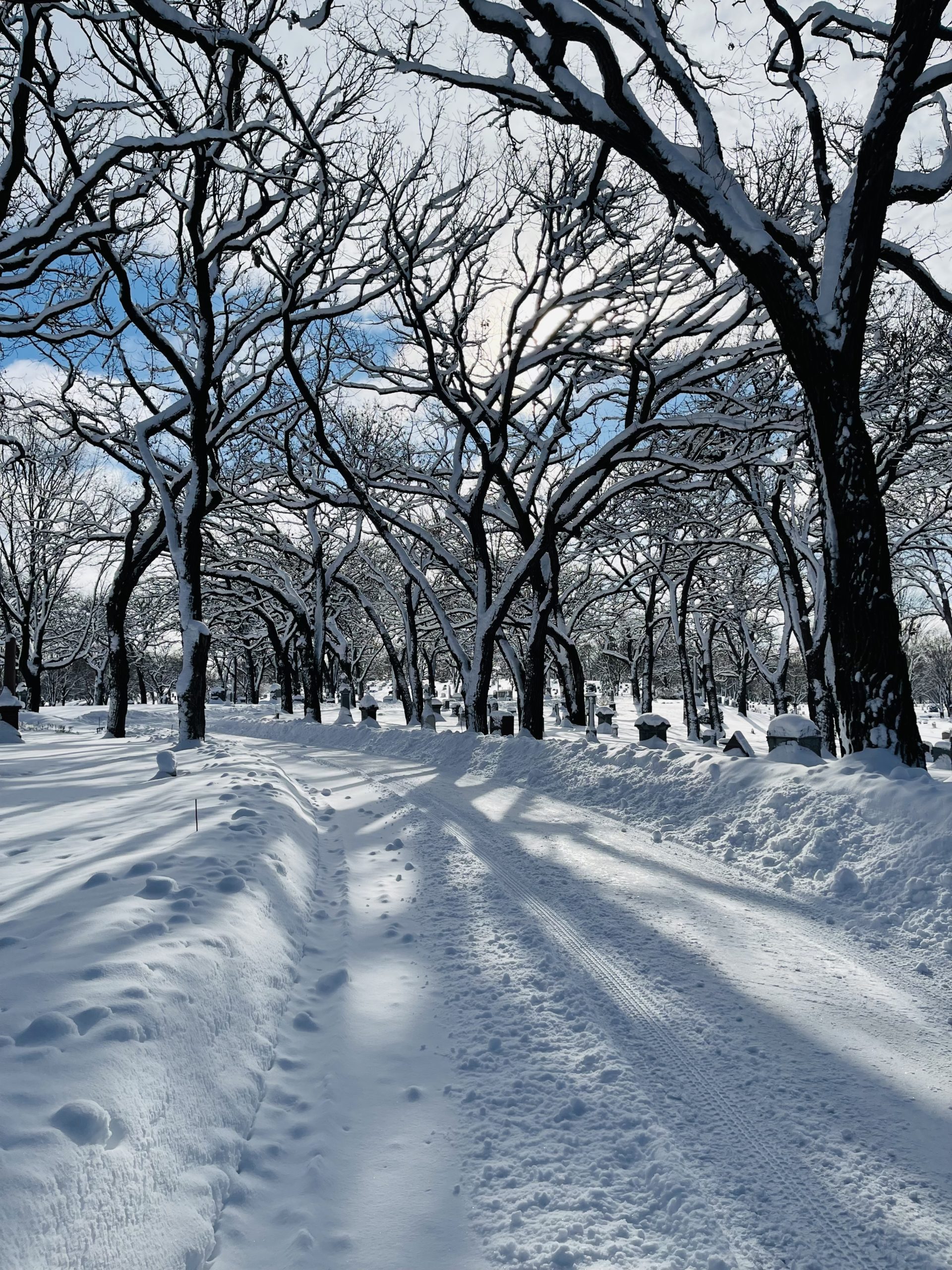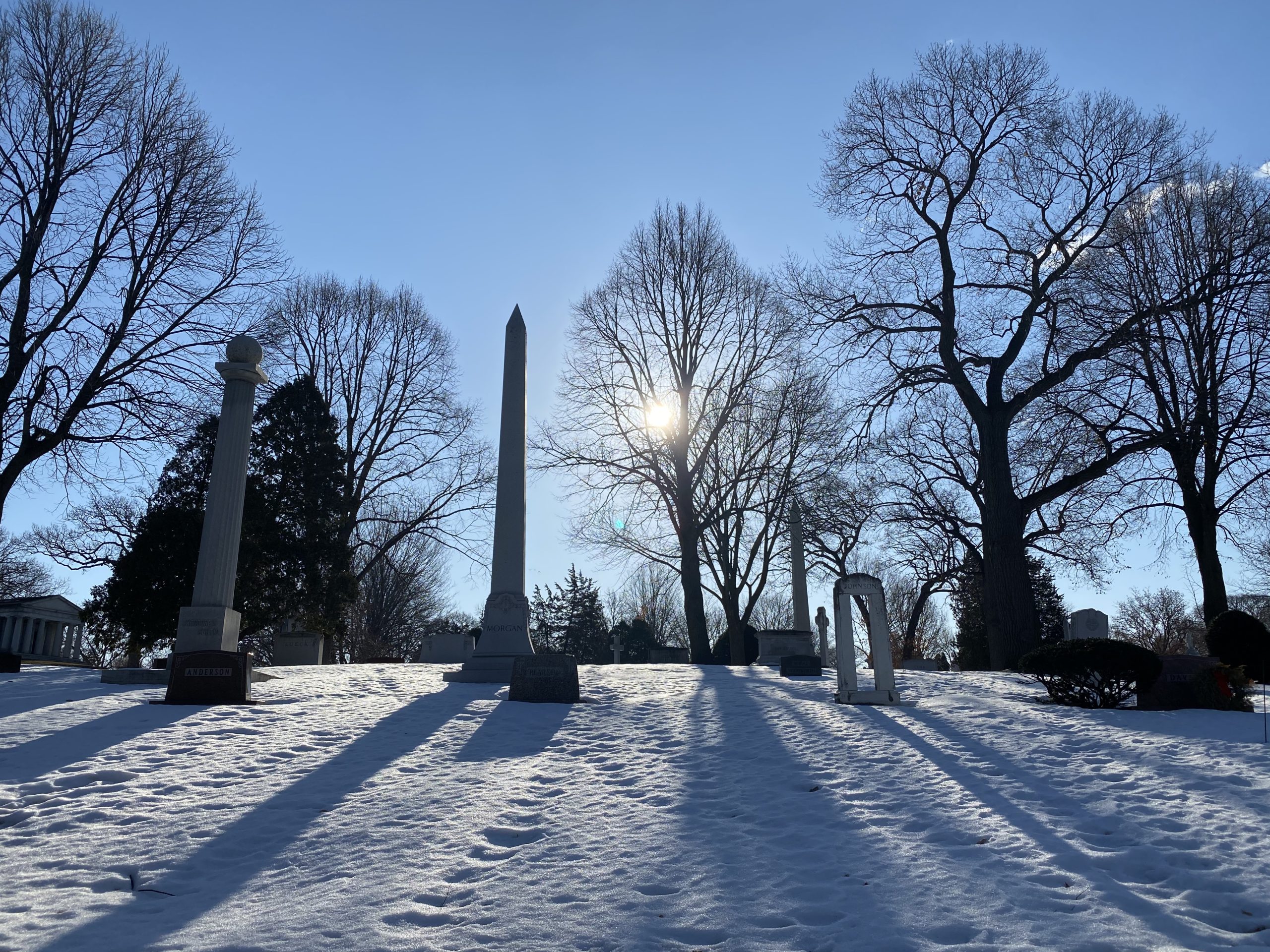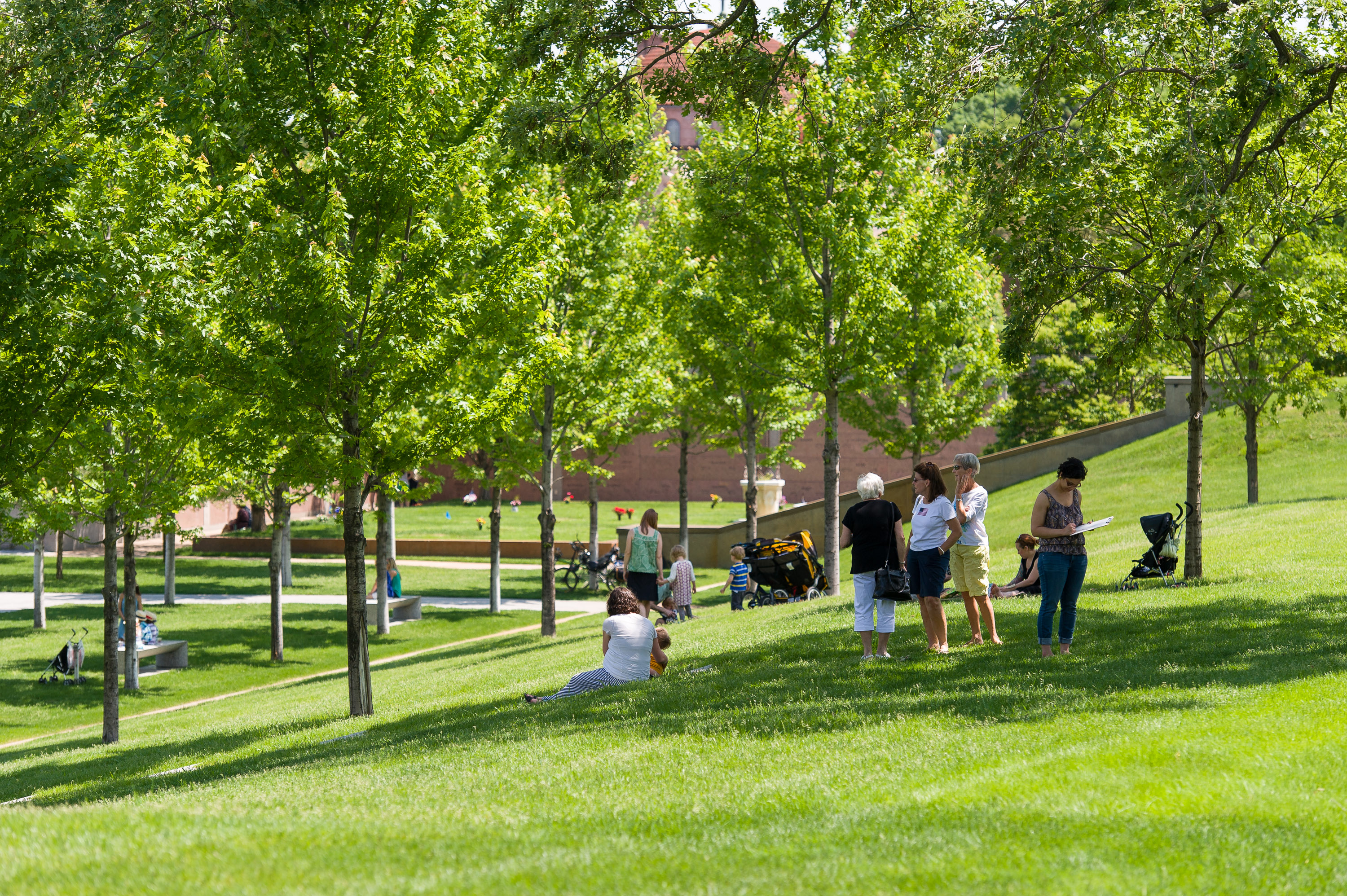Fall is a busy time for Lakewood! We talked to Paul Aarestad, Lakewood’s Buildings & Grounds Director, to learn more about what he and his crew do during fall to maintain Lakewood’s beautiful grounds and gardens.
Q: What exactly do you do at Lakewood in the fall?
A: We do a number of things. One of the most challenging is taking apart the harp and garden temple topiaries and moving them into the greenhouse where they are kept through winter. We use a crane to lift them in sections, put the sections on a truck and transport them to the greenhouse.
Over the winter we take cuttings of the plants — purple and red alternanthera, lemon coral sedum, coleus, creeping fig, sweet potato vine and various succulents for future flowerbeds. When the weather is warm enough, we reassemble the topiaries in place. Our goal is to make the topiaries and flowerbeds self-renewable — that is, to use cuttings of the same plants year after year. As of this year, the harp topiary is entirely renewable.
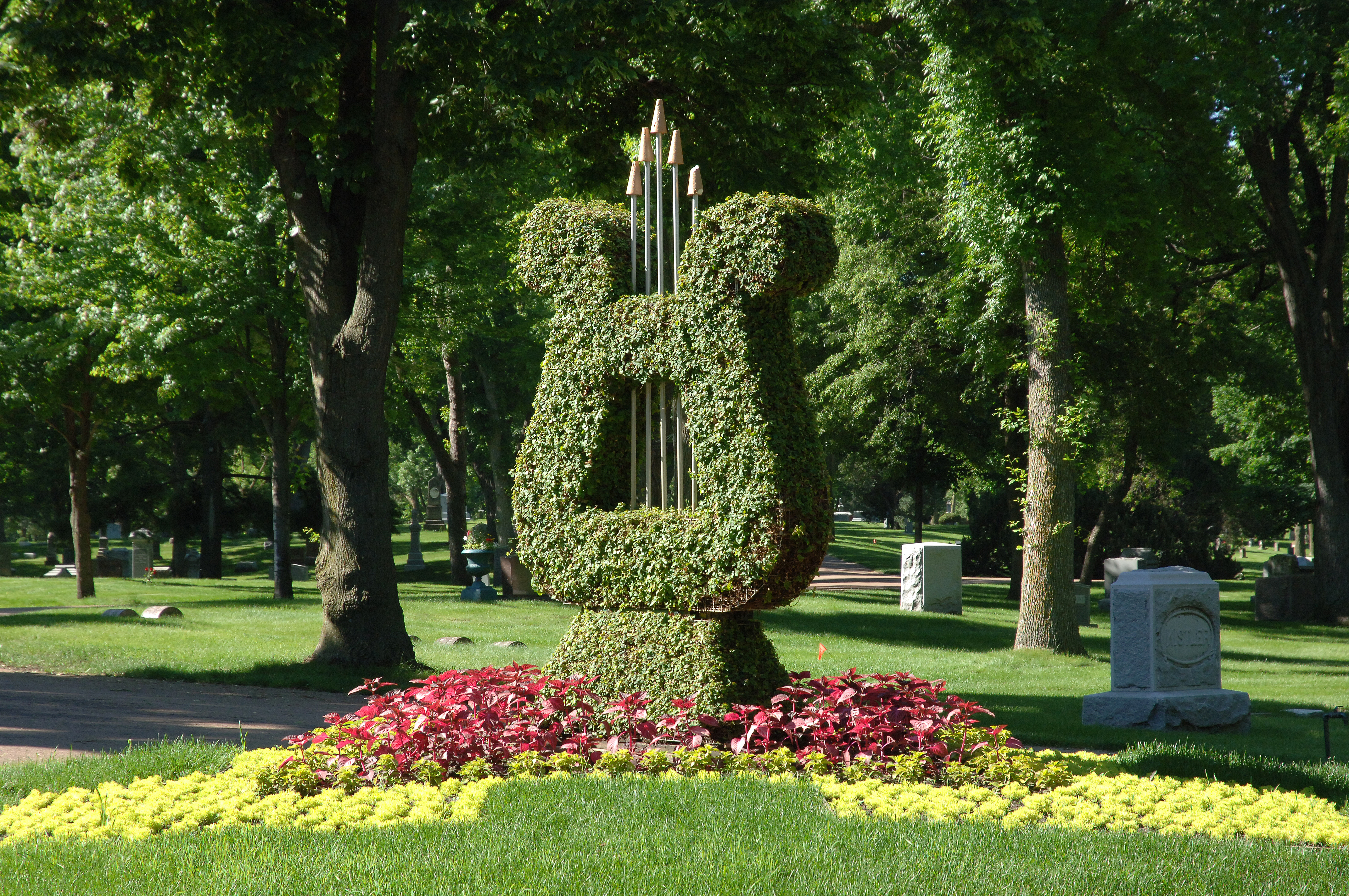
Harp topiary at Lakewood
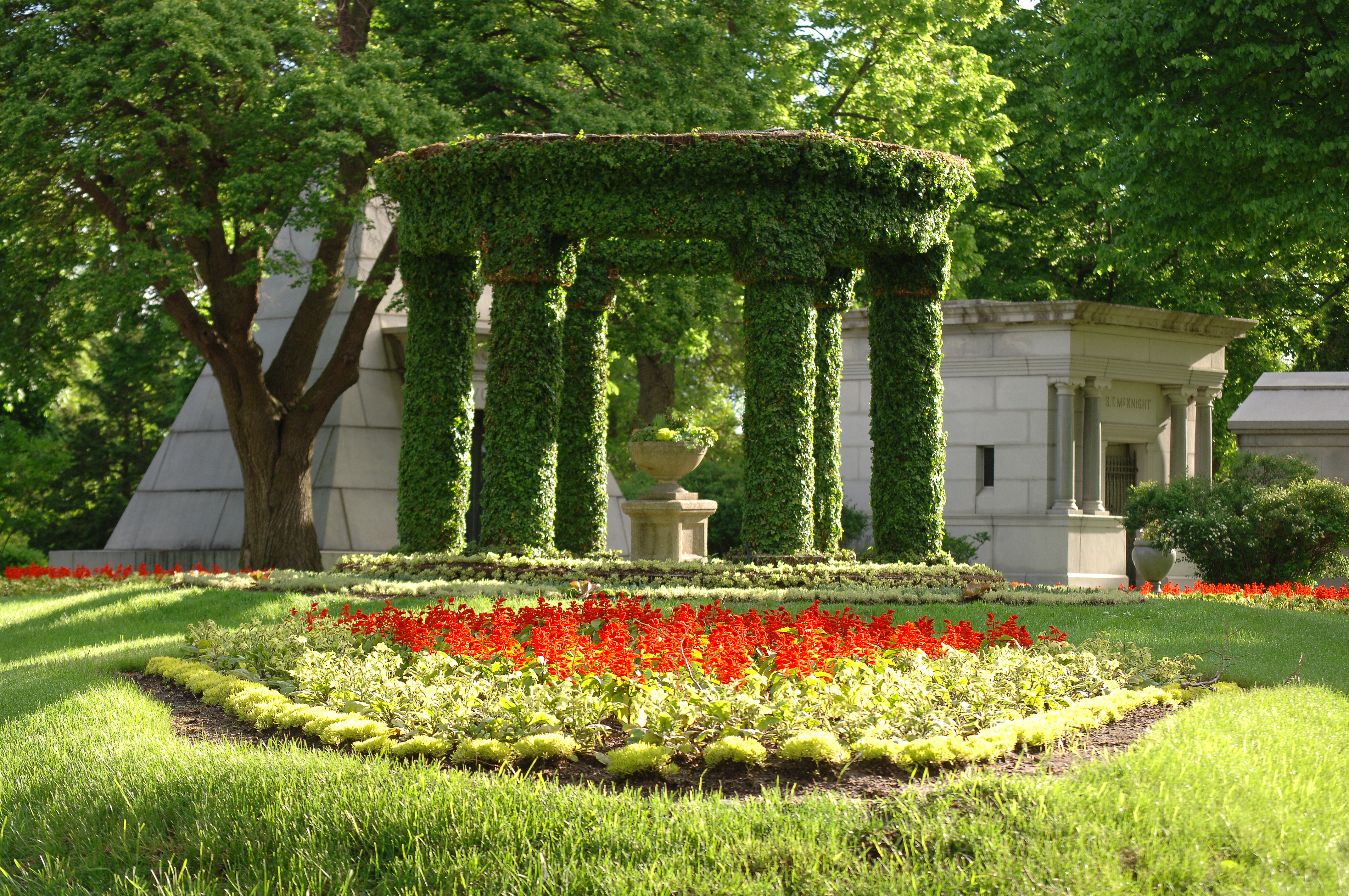
Garden temple topiary at Lakewood
Q: Lakewood is known for its stunning red tulip beds. How do you maintain those year-to-year?
A: We pull up all the flowerbeds in mid-October, which is usually before frost hits, and then we spread mulch and compost. Next, we till the soil and plant new tulip bulbs — about 40,000 of them — by the end of October, and cover the beds with straw for the winter. We use new bulbs to retain the consistent color and height of the beds.
Q: How do you plant that many in such a short time?
A: First we put down a homemade template made up of metal bars spaced four inches apart. Using dibbles, we punch holes in the center of each marked spot on the grid to a depth of three to four inches and insert the bulbs. Our crew is really efficient — they can plant a bed of 6,000 tulips in four hours.
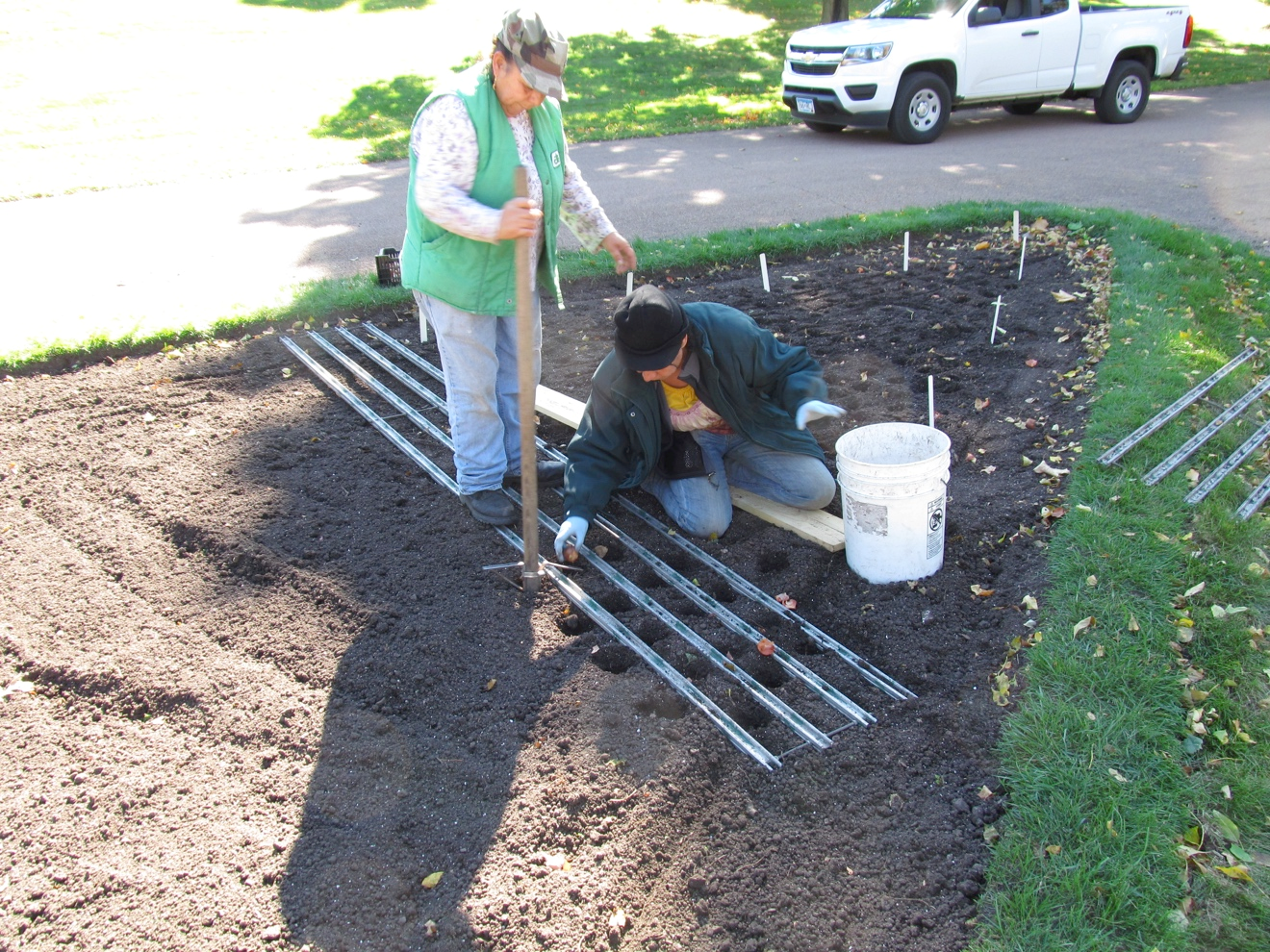
Grounds crew at Lakewood planting tulip bulbs in the fall.
Q: Visitors often remark about the beautiful scarlet canna lilies. How are they planted?
A: Until recently Lakewood preserved canna rhizomes going back some 120 years. After the plants were pulled from the beds, the stalks were cut to about three inches and saved over winter, then replanted in the spring. But a few years ago, a virus struck cannas all over the world. In fact, the virus was discovered right here in the Lyndale Park Rose Garden. Now we plant virus-free seeds in our greenhouse during the winter and set the plants after the danger of frost has passed.
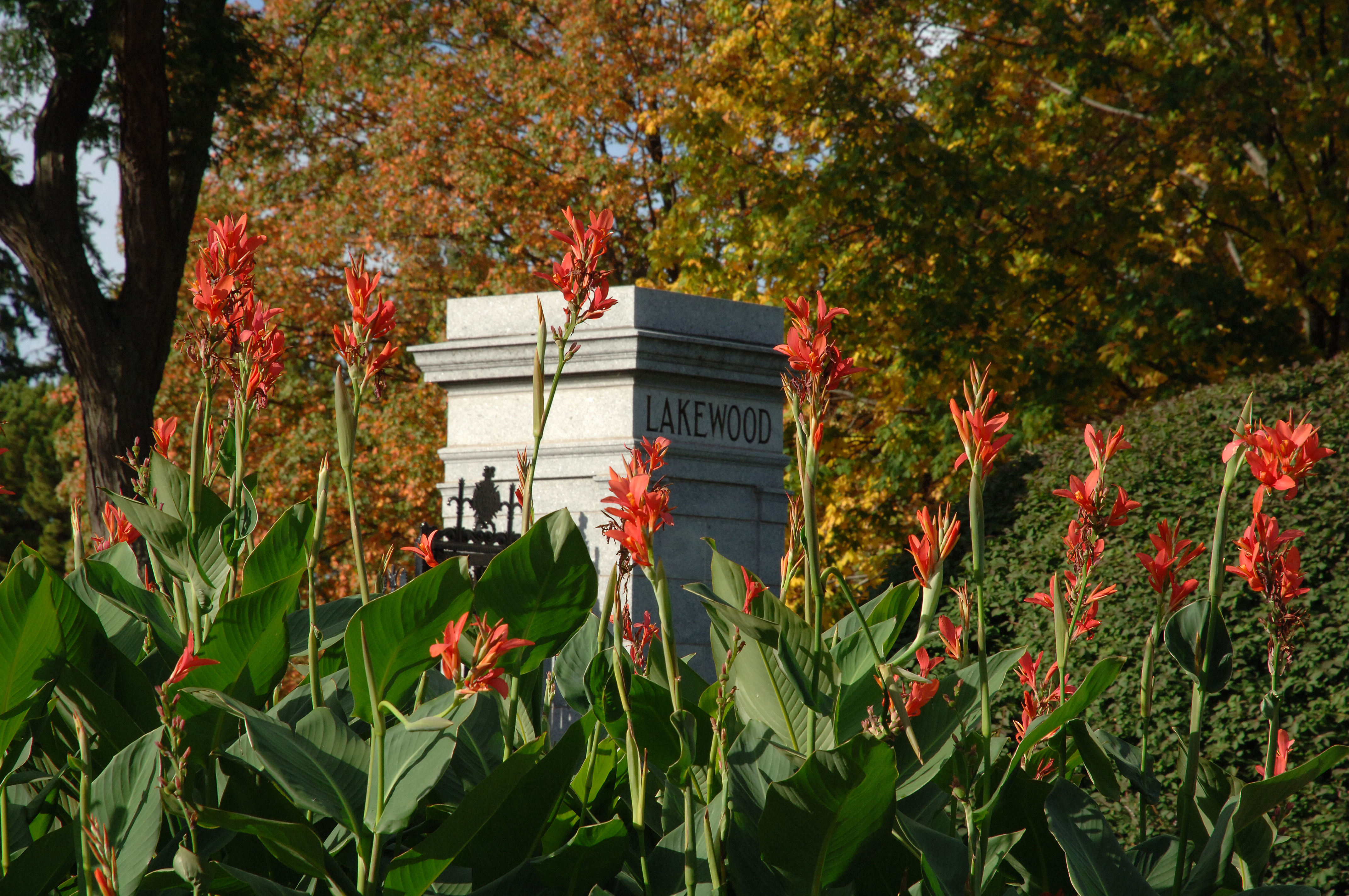
Canna lillies near Lakewood’s front gates
Q: What about the trees? Do any need special care to survive winter?
A: We cover the boxwood hedges with burlap and wrap some of the newer maple trees.
Q: What other chores does the grounds crew take on to prepare for winter?
A: A major task is taking up all the leaves that fall. The crew blows all the leaves into huge rows alongside the roads. Then they are gathered by a gigantic vacuum scoop and piled into truck beds. More than half go to Lyndale Park. The Lyndale Park Rose Garden alone takes 60 truckloads of compost to cover its roses and other plantings. Other Minneapolis Park Board gardeners ask to have leaves dropped off so they can use them to mulch their flowerbeds. We also donate leaf mulch to the Sabathani Center community garden.
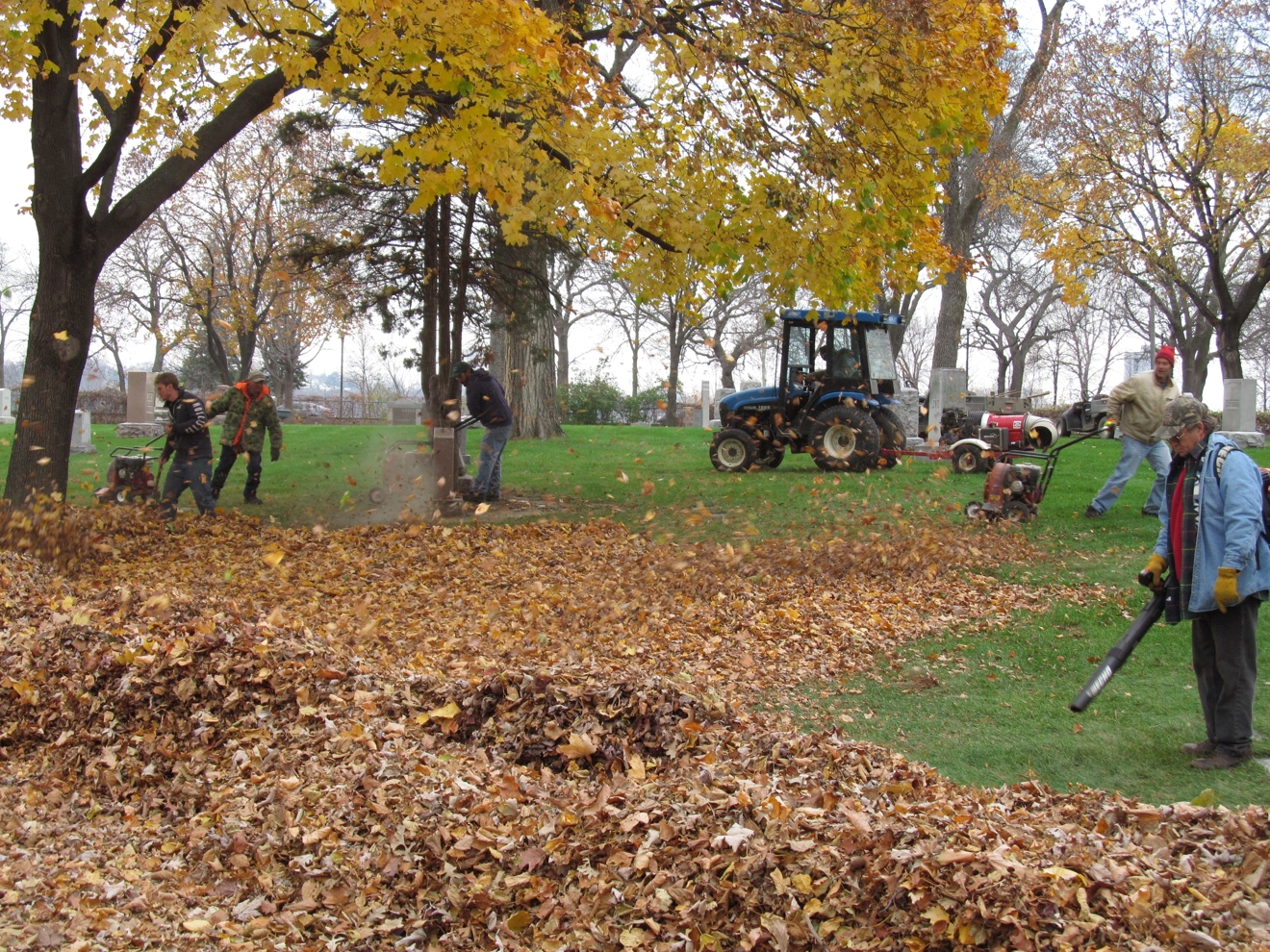
Leaves, leaves and more leaves: Lakewood grounds crew doing fall leaf clean-up.
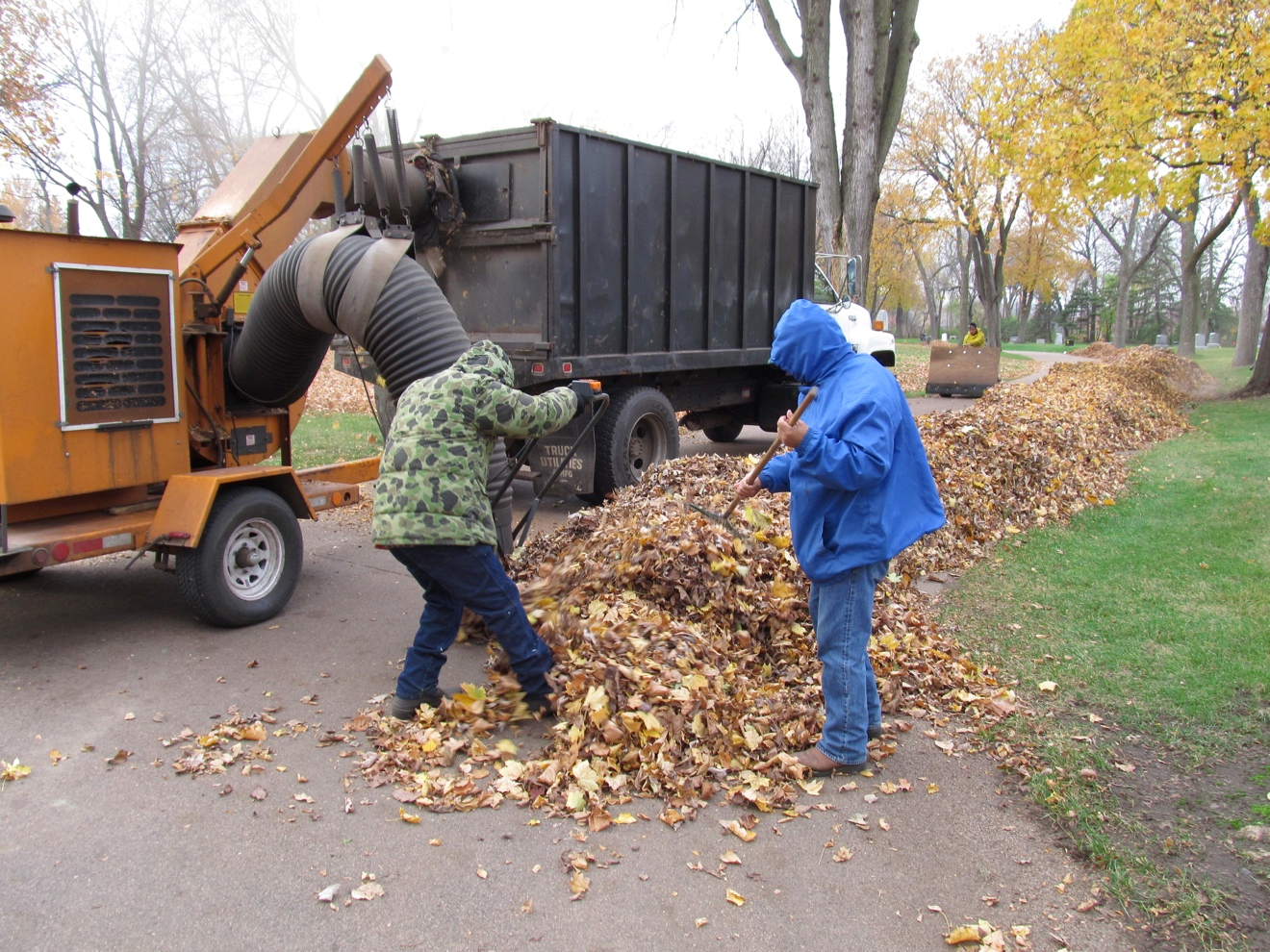
Vacuuming leaves at Lakewood during fall leaf clean-up. Lakewood’s leaves are used as mulch for other local gardens.
Q: What goes on in the greenhouse about now?
A: We’re starting to clean and prepare the tables and benches so they’ll be ready for new cuttings. Another big job is reconstructing the wooden lanterns used for our Lantern Lighting Celebration in September. It takes five people three days to repair and pack them in boxes to be ready for next year.
Q: What about garden plans for next year?
Designs for next year’s flowerbeds are nearing completion. We try to carry many of our garden traditions forward, while also trying a few new things each year. We are also planning to have dozens of new saplings to plant in the spring and summer – as part of our multi-year plan to replace the hundreds of ash trees that we lost to the emerald ash borer over the past few years.
Q: How far back does Lakewood’s garden tradition go?
A: In 1857, Dr. Alfred E. Ames, a physician who served as one of the first doctors at Fort Snelling, brought in the first professional gardener, William Buckendorf. He later ran the Mendenhall greenhouse, which became Lakewood’s greenhouse. It’s interesting to note that ours is the oldest standing greenhouse still in use in Minnesota. It’s part of our long tradition of maintaining Lakewood as a garden cemetery. Watch this video to see Paul talk more about Lakewood’s greenhouse history.
Q: What tips do you have for home gardeners?
A: As you can guess, tulips are by far my favorite bulbs. They bloom for a short time but are so welcome because they announce the arrival of spring. They are easy to grow and can be planted in a range of depths. My advice is don’t plant the bulbs too far apart. Instead, cluster them for more intense color. We plant six bulbs per square foot.
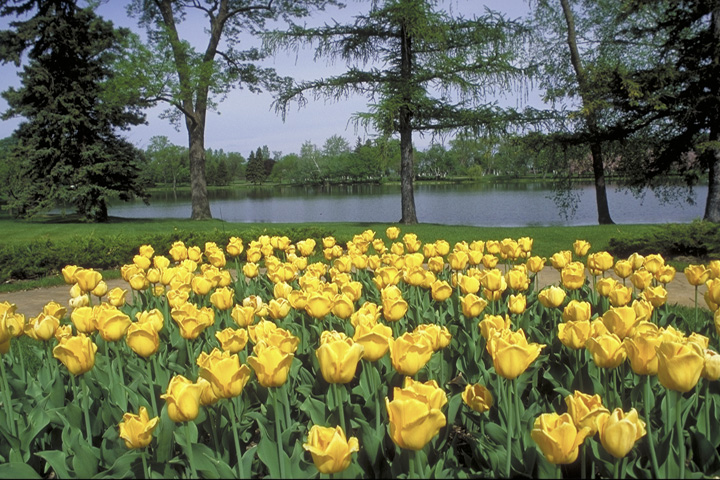
Yellow tulips at Lakewood in the spring
Q: What about storing canna lilies to replant in spring?
A: Cannas suffer when the temperature dips below 40 degrees. As I mentioned, we plant new tubers from seed. But home gardeners can save them by cutting back the stalk to two or three inches. Put them in a bucket of dirt or sawdust, without water, and leave them in a cool, dark place with a steady temperature of 40 degrees. In April, start them in a tray then plant them in beds when the night time temperature is consistently in the 60s.
Q: Any advice for home gardeners?
A: Yes! My advice is don’t be afraid to try something new. If it turns out to be a disaster, that’s part of the fun. You can learn from it!
